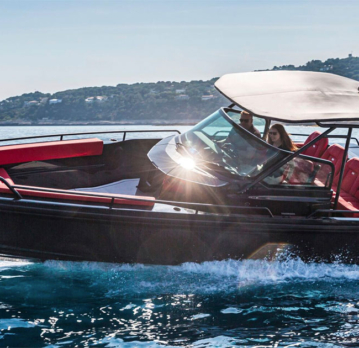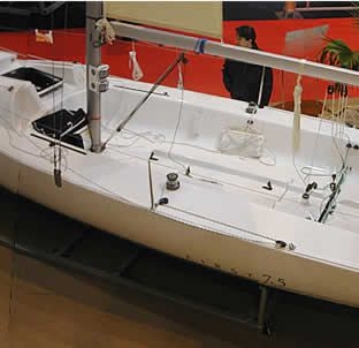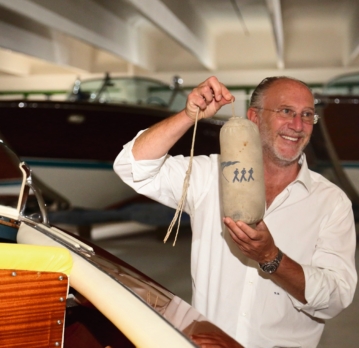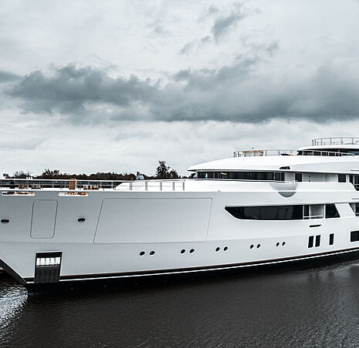The Gulf Craft group of companies – the largest shipbuilder in the Middle East – has been developing the promising brand Nomad Yachts for quite some time. Last spring, the Nomad SUV models debuted at the Dubai International Boat Show and reached the main European yachting shows by autumn: the Nomad 75 SUV was shown in Cannes, and the flagship Nomad 95 SUV in Monaco.
Considering that the shipyard previously built mainly typical flybridge yachts (they are successfully produced to this day), then the question arises: why did it need SUV yachts with transitional hulls?
“Our goal is to enable owners to move further and live longer on board without sacrificing comfort,” said Garrett Lloyd, Brand Manager, Nomad Yachts. “These yachts give them a new degree of freedom, allowing them to travel without fear for their life and the boat if the weather suddenly changes for the worse.”
It is worth noting that Gulf Craft already has yachts of similar length that meet these requirements (for example, the Majesty 100), but with the Nomad SUV, the company has focused on a different market sector. If in the first case the Mediterranean yachting lifestyle is mainly “for sale” (leisurely movement between marinas and anchorages along the coast), then Nomad SUVs are addressed to travelers, which, incidentally, is also underlined by the brand name meaning “Wanderer”.
This yacht is addressed to travelers, which, in addition to its characteristics, is also emphasized by the brand name – “Wanderer”
“Why not go from Nice to Corsica, and from there – along the coast of Sardinia to Malta, without hiding in the marinas, as soon as a stronger breeze blows? – says Garrett Lloyd. “For example, the Nomad 75 came from Dubai to Cannes on its own through the Red Sea and the Suez Canal, having traveled more than 4,500 miles and thus demonstrating the essence of the Nomad brand.”
With positioning cleared up, let’s take a closer look at the Nomad 95. The exterior design of the yacht can be defined as classic: this is evidenced by the strict parallel lines of the decks, rows of identical rectangular windows, a Portuguese bridge, a high bulwark in the bow, giving way to a railing in the saloon area and further to the stern. The ship was designed by designer Andrew Wolstenholm, whose portfolio includes models of such iconic British brands as Broom, Hardy and English Harbor.
Shown on MYS, the yacht featured a pigeon wing gelcoat that looks great. The hull itself is made of fiberglass (sandwich structures with a core of balsa and styrene-acrylonitrile foam; the binder is vinyl ester resin), and local reinforcements of Kevlar and carbon are used in the superstructure. Molding is carried out by the contact method using isophthalic gelcoat with a low styrene content to reliably protect the body from the damaging effects of hydrolysis and ultraviolet radiation.
In terms of technical equipment for the Nomad 95, the shipyard adhered to the principle of KISS (keep it simple stupid) so that buyers received a reliable vessel with proven technical solutions and did not overpay for what is not necessary. At the same time, there is reasonable duplication and the ability to optionally add equipment for specific tasks.
Dossier Nomad 95 SUV
Length:
30.55 m
Width:
7.40 m
Draft:
1.77 m
Displacement (50% load):
114 t
Fuel supply:
14 573 l
Water supply:
1700 l
Engine:
2 × MAN V12-1900 (1874 HP)
Passengers:
10/12 persons
Crew:
5/7 people
Classification Society:
Bureau Veritas, LY3
Chief Editor
comfortnomadSUVtravel













What do you think?